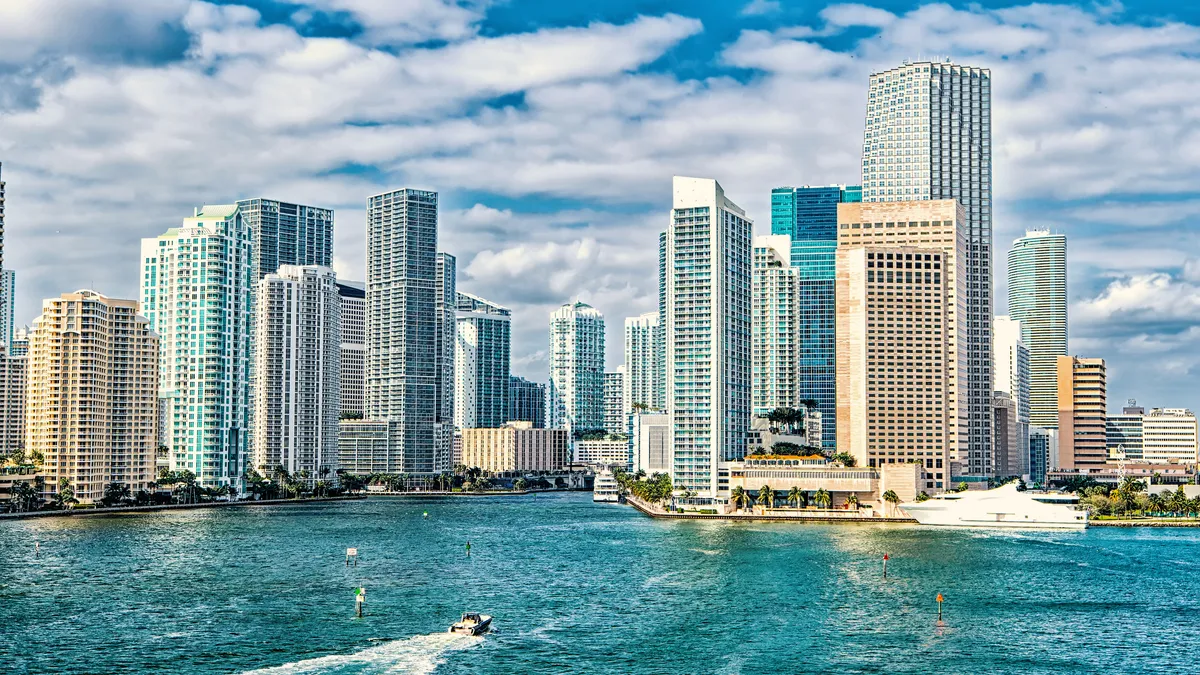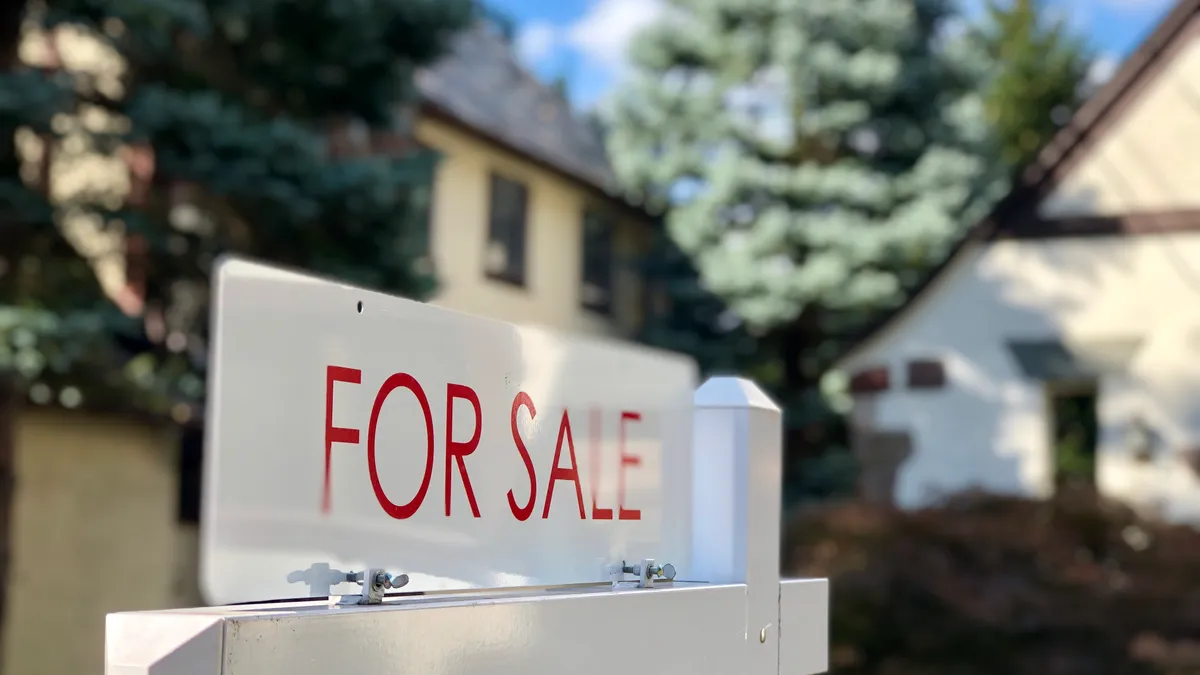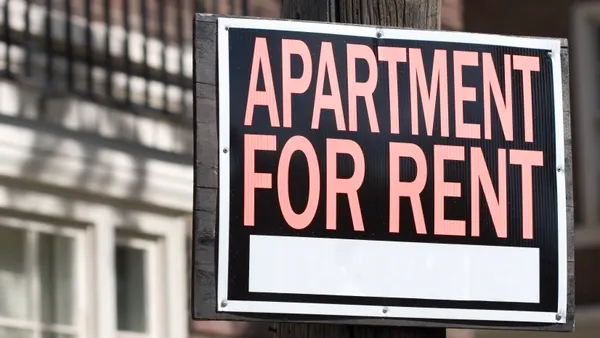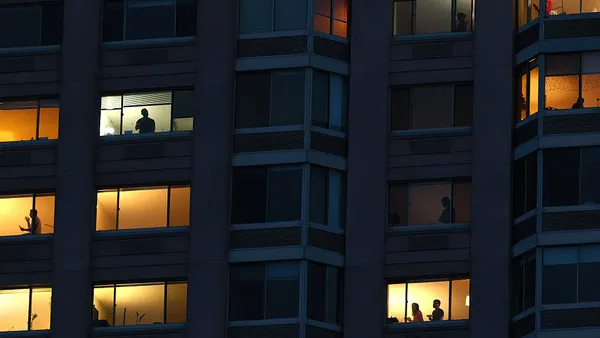Dive Brief:
- The nation’s apartment market is only getting more competitive for renters, despite a peak in new deliveries last year, according to RentCafe’s annual analysis.
- RentCafe rates the country’s Rental Competitive Index at 74.6 out of a possible 100, up from 73.4 in early 2024. New apartment deliveries have begun to pull back, with new supply rising only slightly to 0.72% of the total stock — not enough to meet demand, according to the report. Each existing vacant unit now has an average of nine renters competing for it, up from eight in 2024.
- At the same time, lease renewals are rising, meaning more renters have decided to stay put in the last year than the previous year. The lease renewal rate stands at 63.8%, up from 62.4%, and the average time a household spends in a unit has risen to 29 months.
Dive Insight:
RentCafe bases its RCI on five data points — new apartment construction in the past year, number of prospective renters, lease renewal rates, occupancy and days until a vacant apartment is leased.
Miami not only remains the nation’s hottest rental market, but has become even more competitive in the past year, moving up 2.6 points to 96.7 on the RCI — 22 points above the national average and more than ten points ahead of any other market.
The 10 most competitive rental markets
| Market | Competitiveness score | Occupancy rate | Prospective renters per vacant unit | Share of new housing units in stock |
|---|---|---|---|---|
| 1. Miami | 96.7 | 96.6% | 21 | 0.40% |
| 2. Suburban Chicago | 85.1 | 95.6% | 14 | 0.14% |
| 3. Broward County, Florida | 85.0 | 95.2% | 14 | 0.82% |
| 4. Eastern Los Angeles County | 83.9 | 96.1% | 18 | 0.30% |
| 5. Suburban Philadelphia | 81.7 | 94.9% | 11 | 0.10% |
| 5. Manhattan, New York | 81.7 | 95.9% | 11 | 0.15% |
| 7. Chicago | 81.1 | 95.0% | 13 | 0.23% |
| 8. Lansing-Ann Arbor, Michigan | 80.6 | 95.3% | 9 | 0.32% |
| 8. Bridgeport-New Haven, Connecticut | 80.6 | 94.7% | 12 | 0.05% |
| 8. Brooklyn, New York | 80.6 | 96.7% | 12 | 0.61% |
SOURCE: RentCafe
Vacant apartments in Miami fill within an average of 36 days — 10 days shorter than the national average — and draw 21 competing renters on average. Lease renewals have risen to 74.7% from 73.4% in early 2024, while occupancy has grown only slightly, up from 96.5% to 96.6%.
Suburban Chicago comes in a distant second for competitiveness, up from the No. 4 spot last year — even though its RCI has fallen slightly from 85.3 to 85.1. Overall, Midwest markets maintain a strong presence in the top 20, driven by a mix of strong job opportunities and affordability, according to the report.
The wildfires in Los Angeles earlier this year had a significant tightening effect on its rental market, as many residents were displaced and in need of new housing, according to the report. Lease renewals rose 5.1% over the past year, up to 58%, while the number of competing renters per unit has risen from 14 to 18. New deliveries in the area were already limited, with only 0.3% new supply growth in the past year.
Demand remains high in Silicon Valley as tech workers return to the office, according to the report. Occupancy has risen to 95.3% in areas like Mountain View, Palo Alto and Cupertino, California, and each unit attracts an average of 12 prospective renters and leases in 39 days.
Out of the top 20 most competitive markets in the nation, 15 have a lower share of new apartments in their total stock than the national average. However, only one — Pittsburgh, at No. 20 — had no new deliveries at all in the past year.













